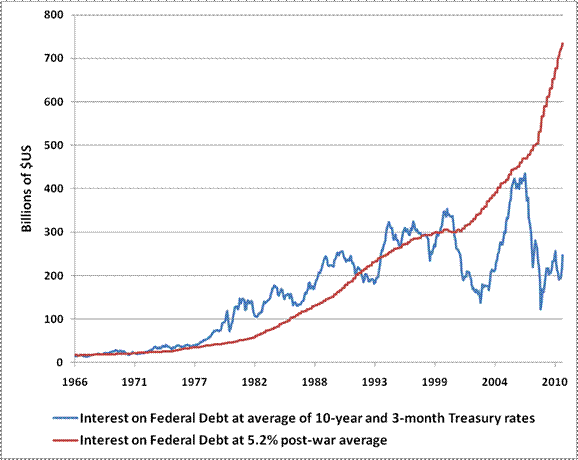Courtesy of John Hussman:
The U.S. fiscal position is far worse than our present $1.3 trillion deficit and nearly 100% debt/GDP ratio would suggest.
On the deficit side, there is certainly a “counter-cyclical” pattern to the U.S. federal deficit. As I noted a few weeks ago, every 1% shortfall of real GDP from potential (as estimated by the CBO) tends to be associated with a roughly 0.67% increase in the deficit as a percentage of potential GDP. So it is certainly true that part of the existing deficit reflects normal “automatic stabilizers.” Unfortunately, this only explains about half the present deficit. Moreover, in order to adequately evaluate the existing deficit, it is essential to recognize that this figure reflects interest costs that are dramatically less than we can expect as a long-term norm. Consider the chart below. The blue line represents interest on the gross Federal debt at the average of prevailing 10-year Treasury yields and 3-month Treasury yields. Presently, this figure is comfortably low, thanks to the depressed level of interest rates. In contrast, the red line shows what the interest service would be at a 5.2% interest rate, which is the post-war norm.
Source: Hussman Funds
Even if we restrict the analysis to publicly-held debt, the interest service at a 5.2% rate would still easily approach $500 billion annually. Investors and policy-makers risk an unpleasant surprise if they do not factor the unusually low level of interest rates into their evaluation of present fiscal conditions.
Read Hussman’s full weekly newsletter here.
A big thanks and hat tip to alert friend and correspondent Dr. Evil for sending this along!


Recent Comments